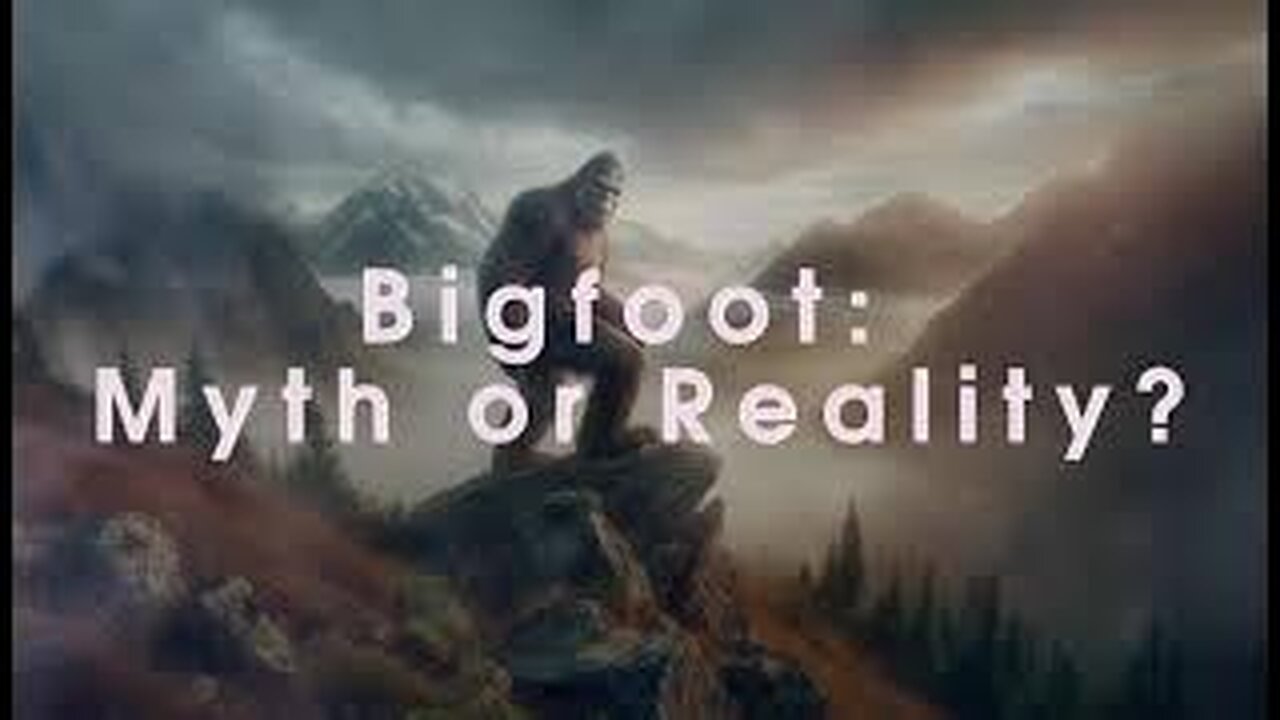Premium Only Content

Bigfoot: Myth or Reality?
Bigfoot is a name given to a large, hairy, human-like creature that is said to live in the forests of North America, especially in the Pacific Northwest. Many people claim to have seen Bigfoot or found evidence of its existence, such as footprints, hair samples, or photographs. However, there is no scientific proof that Bigfoot is real, and most experts consider it to be a myth, a hoax, or a case of mistaken identity.
The origin of the Bigfoot legend can be traced back to the stories and beliefs of various indigenous peoples of North America, who had different names and descriptions for the creature. Some of these names include Sasquatch, Skookum, Dsonoqua, and Wendigo. These stories were often used to explain natural phenomena, warn children of dangers, or teach moral lessons. Some indigenous peoples also regarded Bigfoot as a spiritual being or a protector of the land.
The modern interest in Bigfoot began in the 1950s, when a construction worker named Ray Wallace found a series of large footprints near his work site in California. He made plaster casts of the prints and showed them to the media, sparking a sensation. Later, he admitted that he had made the prints himself using wooden feet. However, by then, the idea of Bigfoot had already captured the public imagination.
In 1967, two men named Roger Patterson and Robert Gimlin claimed to have filmed Bigfoot in a remote area of Northern California. Their footage showed a dark, hairy creature walking on two legs across a clearing. The film became the most famous and controversial piece of evidence for Bigfoot, and has been analyzed and debated by many experts and enthusiasts. Some people believe that the film is genuine, while others think that it is a hoax or a man in a costume.
Since then, many other people have reported seeing Bigfoot or finding traces of its presence, such as hair, feces, or nests. Some of these reports have been investigated by researchers and organizations that specialize in the study of Bigfoot, such as the Bigfoot Field Researchers Organization (BFRO) or the Bigfoot Information Center and Exhibition (BICE). However, none of these reports have been verified or accepted by the scientific community, which considers Bigfoot to be a pseudoscience or a folklore.
The main reasons why scientists are skeptical of Bigfoot are the lack of physical evidence, the inconsistency of eyewitness accounts, and the implausibility of the creature’s biology and ecology. For example, no Bigfoot bones, bodies, or DNA have ever been found, despite the efforts of many hunters and collectors. The descriptions of Bigfoot vary widely in terms of size, color, behavior, and habitat, making it hard to identify a single species or population. The existence of Bigfoot would also require a large and stable breeding population, enough food and water resources, and a way to avoid detection and predation by humans and other animals.
In conclusion, Bigfoot is a fascinating and enduring legend that reflects the human curiosity and imagination. However, there is no convincing evidence that Bigfoot is real, and most scientists regard it as a myth or a hoax. Until more reliable and conclusive proof is found, Bigfoot will remain a mystery and a subject of debate
-
 1:39:44
1:39:44
HELMET FIRE
3 hours agoDEADROP IS BACK!
47.1K4 -
 10:03
10:03
Tundra Tactical
5 hours ago $4.77 earnedBrandon Herrera Vies Bid for ATF Director!
24.7K3 -
 22:01
22:01
DeVory Darkins
1 day ago $17.90 earnedHakeem Jeffries SHUTS DOWN The View as Matt Gaetz Speaks out
27.8K79 -
 2:02:54
2:02:54
Mally_Mouse
4 hours agoLet's Play!! - Spicy Saturday
17.1K -
 1:33:06
1:33:06
Slightly Offensive
5 hours ago $15.34 earnedAre You Ready for What's Coming Next? | Just Chatting Chill Stream
37.2K16 -
 32:10
32:10
MYLUNCHBREAK CHANNEL PAGE
1 day agoThe Gate of All Nations
92.3K41 -
 13:07
13:07
Sideserf Cake Studio
9 hours ago $1.02 earnedIS THIS THE MOST REALISTIC SUSHI CAKE EVER MADE?
26.9K1 -
 21:08
21:08
Clownfish TV
1 day agoElon Musk Tells WotC to BURN IN HELL for Erasing Gary Gygax from DnD!
21.7K8 -
 48:22
48:22
PMG
5 hours ago $3.90 earned"IRS Whistleblowers Speak Out on Biden Family with Mel K In-Studio"
17.9K9 -
 2:59
2:59
BIG NEM
7 hours agoLost in the Wrong Hood: Who Do I Check In With?
14.3K2